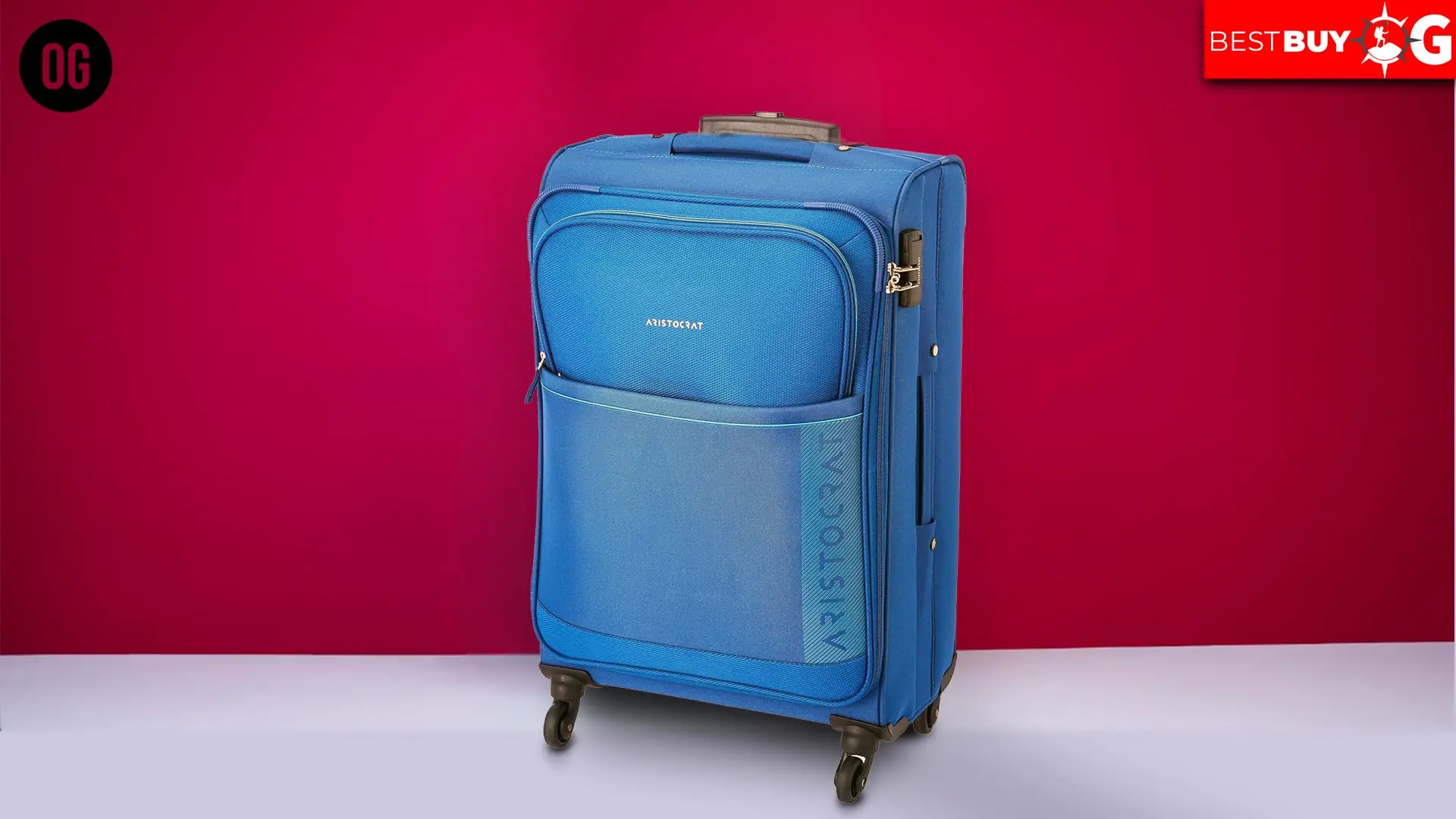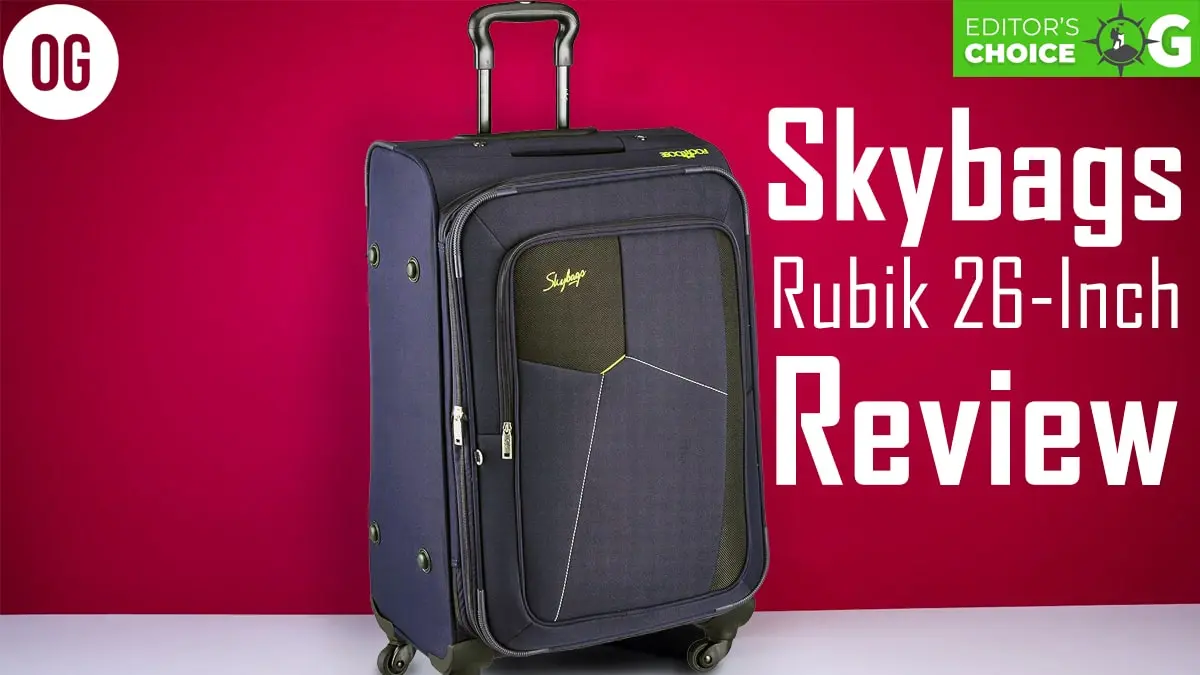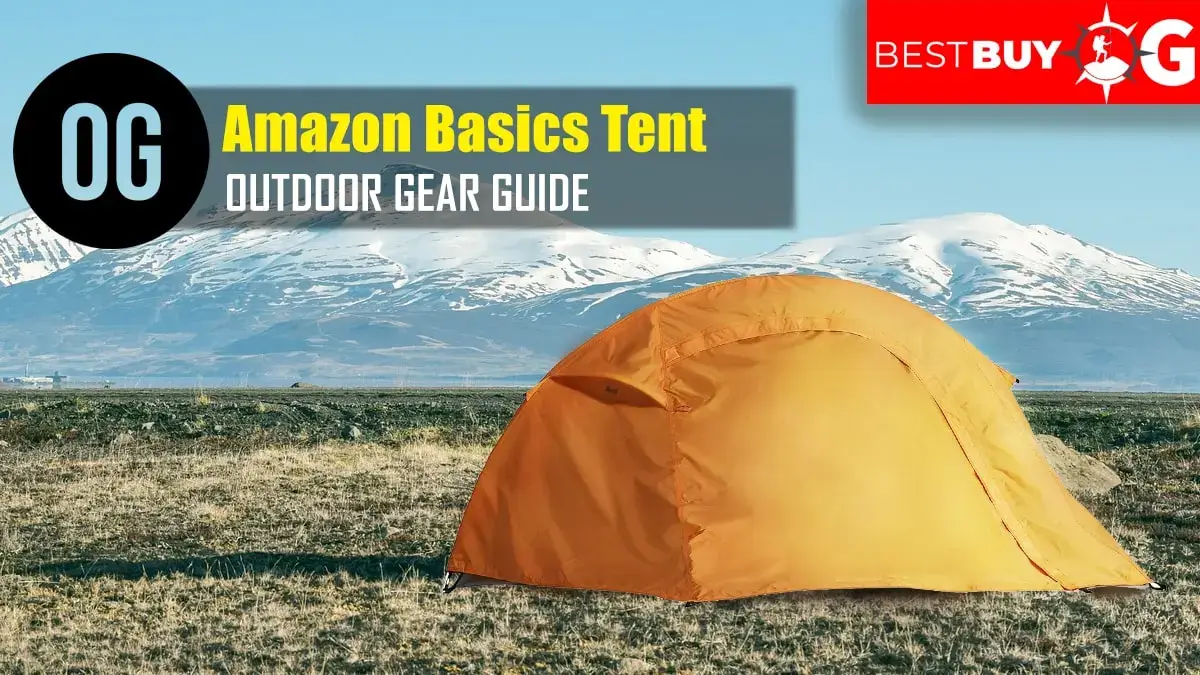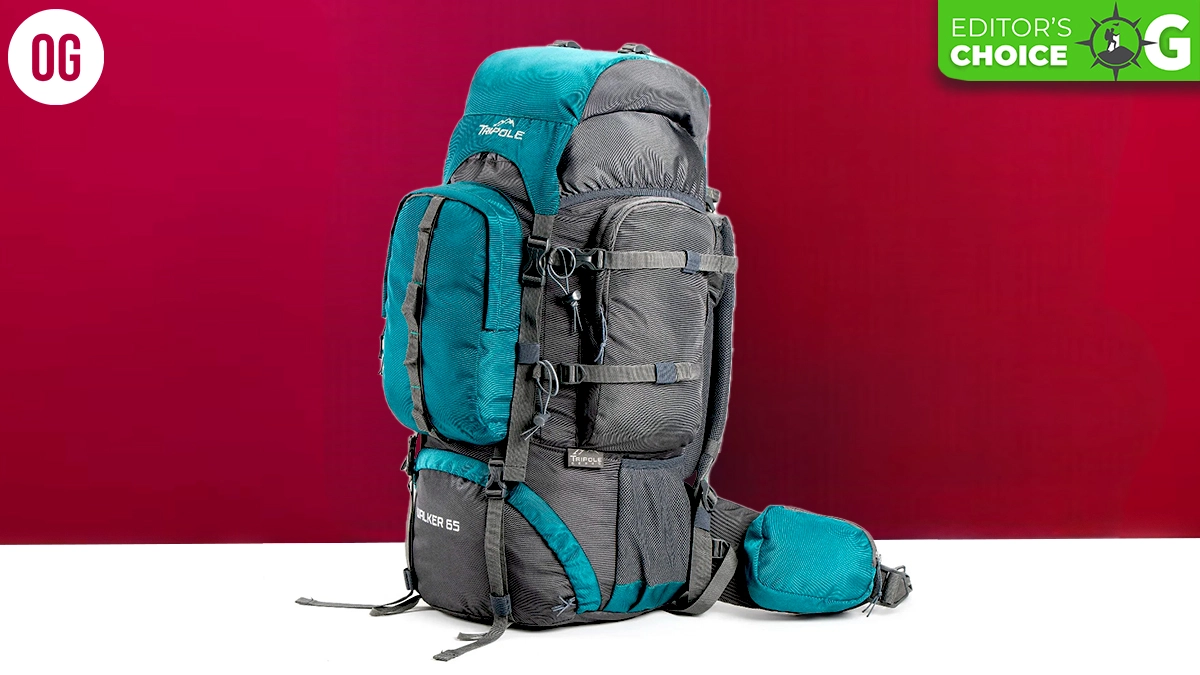7 Quick Solutions on How To Keep Backpack Straps From Slipping
How To Keep Backpack Straps From Slipping is not a very serious question that can hammer your adventure experience but it is one of the most annoying hikers or campers face.
Table of Contents
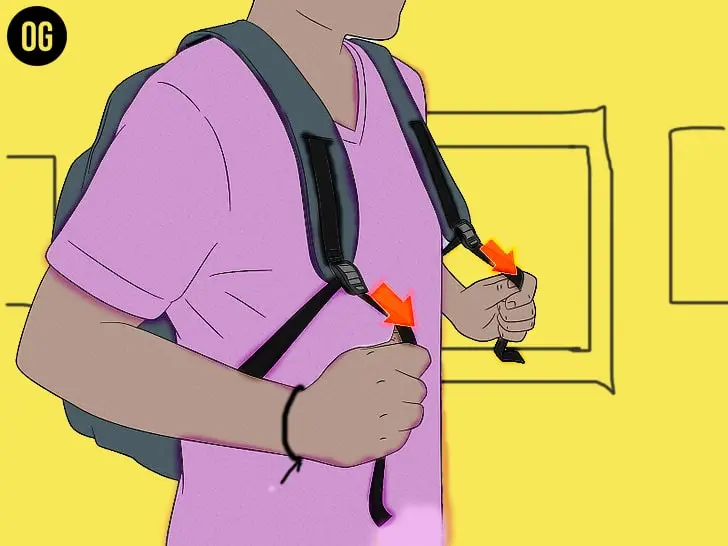
Not only does the constant slipping of backpack straps prove bothersome, but it can also result in discomfort such as shoulder, neck, or back pain. Often, the main culprit behind this issue is an incorrectly sized school or outdoor backpack.
Fortunately, this can be resolved by opting for the appropriate pack size and adjusting the straps snugly. Alternatively, you might troubleshoot the problem by swiftly addressing issues with the straps, buckles, or shoulder pads.
Immediate Solutions:How To Keep Backpack Straps From Slipping
Adjust The Shoulder Straps
- While wearing the backpack, locate the loose ends of the shoulder straps emerging from the adjustment buckles below your armpits.
- Pull these ends evenly and firmly to snugly adjust the backpack against your back, ensuring it’s not uncomfortably tight. Aim for positioning the pack between your shoulder blades and hips.
Remember:
- Avoid over-tightening the straps; there should be enough space for you to slip your hand between each strap and your underarm.
- If even after tightening the straps to their maximum, the backpack still sags and touches your backside, it’s highly likely that the backpack is too large for you.
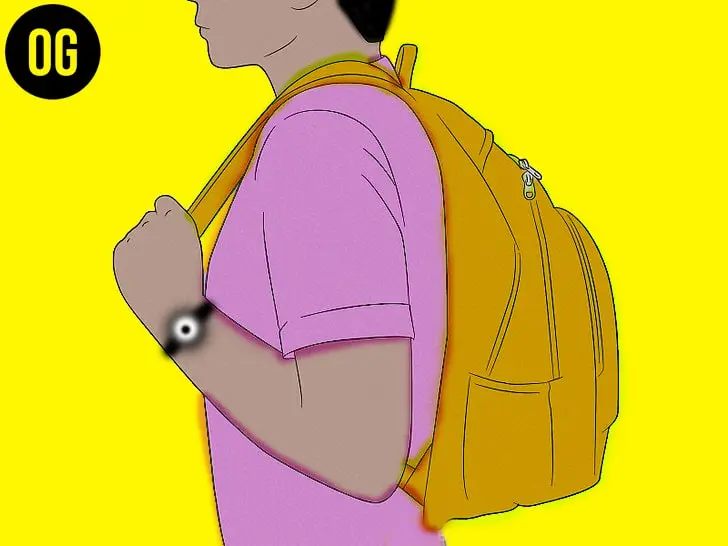
Related: How To Pack a Backpack For Overnight Camping
Reduce The Load You Carry
Reduce the load you carry to under 10-15% of your body weight.
- Heavy backpacks can lead to slipping shoulder straps and potential discomfort.
- Overloading can cause back pain, neck strain, or shoulder bruising.
- Kids shouldn’t carry more than 10% of their body weight in their backpacks.
- For instance, a 75 lb (34 kg) child should limit their pack weight to 7.5 lb (3.4 kg).
- Adults should aim for the 10% threshold and consider 15% as the maximum safe weight limit.
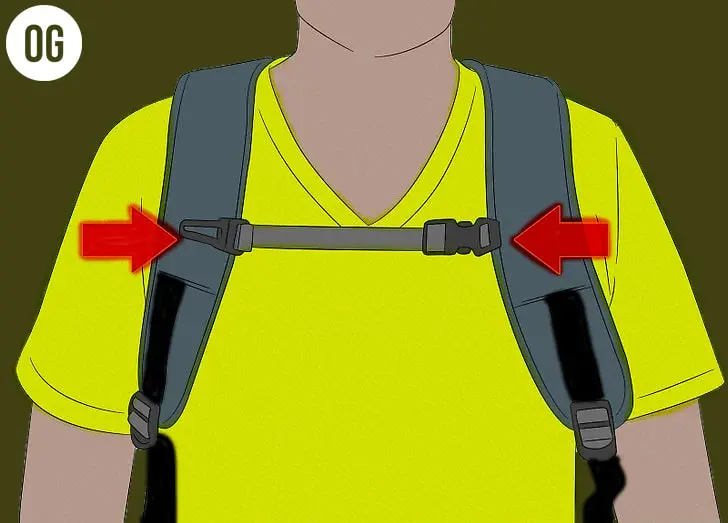
Connect The Shoulder Straps
- Use a sternum strap to connect shoulder straps across your chest, preventing slippage.
- While more common in outdoor backpacks, sternum straps might not be found in school backpacks.
- Consider purchasing sternum straps online, usually made of similar materials as shoulder straps.
- Proper placement is crucial: the buckled strap should sit around 1 inch (2.5 cm) below your collarbone on your chest.
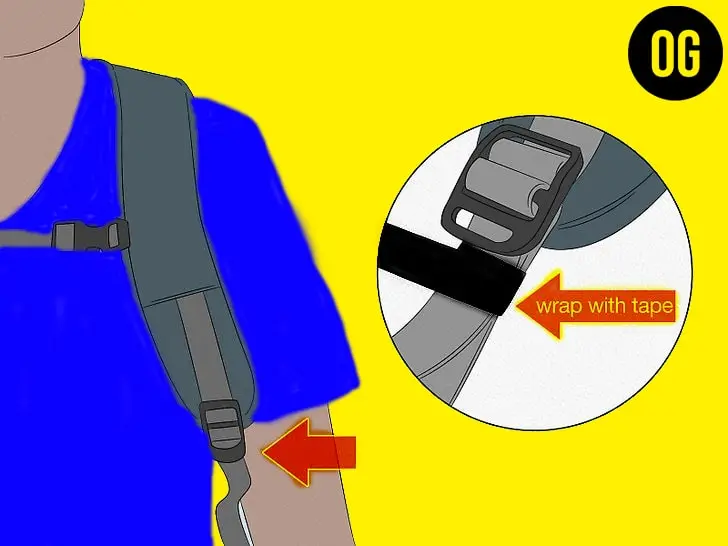
Tie or Tape The Shoulder Straps
- If buckles on shoulder straps slip, consider tying or taping them.
- The plastic buckles in backpack straps adjust the length but might fail to hold, causing slippage.
- Quick fixes include tying a simple knot at the end of the strap under each buckle.
- Alternatively, use sturdy tape, like duct tape or electrical tape, wrapped around the strap sections below each buckle for reinforcement.
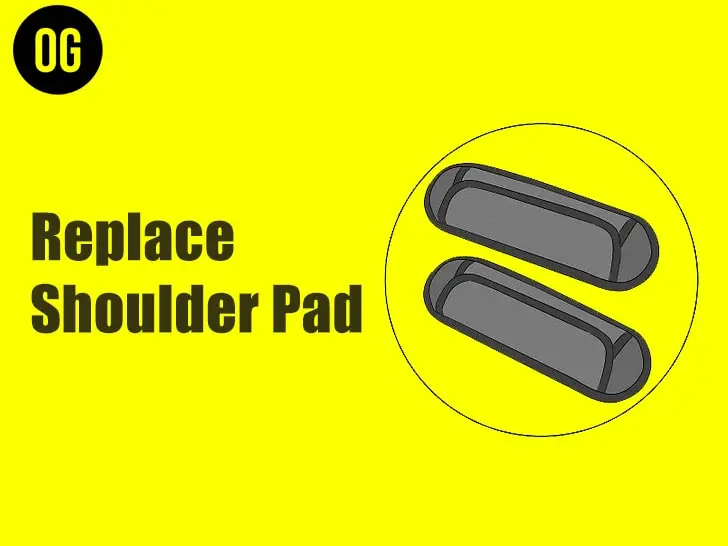
Replace Shoulder Pads
Consider upgrading or supplementing the existing shoulder pads of your backpack. These pads not only aim to cushion against strap pressure but also play a role in preventing slippage. Opt for pads with a textured underside for better grip.
Search the internet for “backpack shoulder pads.” Even if your backpack has non-removable pads, you can likely add another set over them. These additional pads often attach using snaps or hook-and-loop (Velcro) closures.
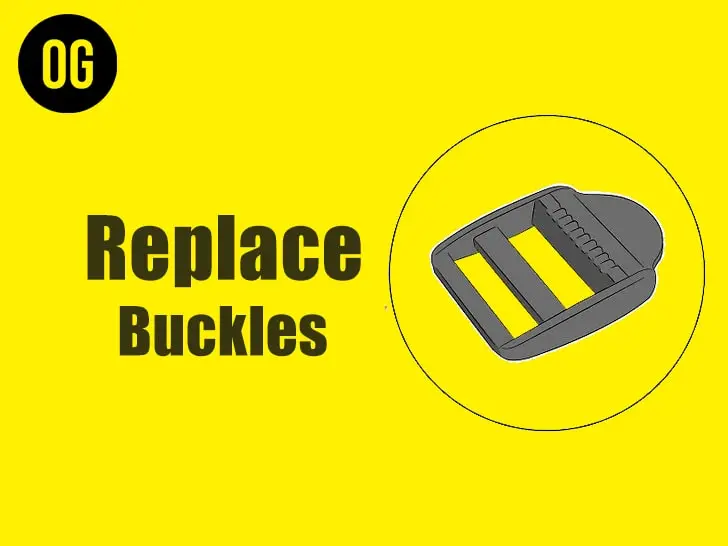
Replace Low-quality Buckles
Substitute ineffective, low-quality buckles that fail to secure the straps. Certain buckles lack the necessary texture to grip the straps, and even durable ones might wear out, losing their effectiveness. In such cases, replacing the buckles becomes the ideal resolution.
Buckle varieties vary in shapes, sizes, and designs. For the most suitable replacements, consider taking your backpack to a specialty camping or hiking gear retailer. An associate there can assist in finding the perfect buckles tailored to your requirements.

Backpack Fitting
Above all these one of the most important points that you must always remember and take action on is choosing the right backpack that fits you best. We have already published an article providing you with 6 Essential Tips on How To Properly Fit Your Backpack.
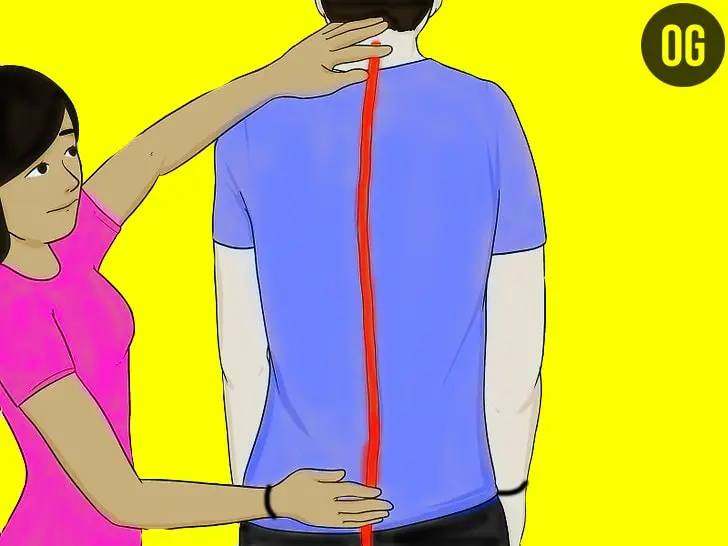
Related: 6 Essential Tips on How To Properly Fit Your Backpack
Backpack As Per Your Torso Length
- Use a flexible cloth tape measure and have a friend measure your spine’s curvature from the base of your neck (C7 vertebra) to the vertebra aligning with the tops of your hip bones.
- Note down this measurement for reference when shopping, either in a physical outdoor gear store or online.
- Measurements shorter than 16 inches (41 cm) might require an extra small pack, while those longer than 20 inches (51 cm) might necessitate a large pack.
Load The Backpack
Load your pack without adjusting any straps. Arrange your gear inside, placing heavier items closest to your back, mimicking how you’ll pack it during use. If the waist belt or sternum strap is fastened, undo them to slide the pack over your shoulders.
Remember, outdoor backpacks are designed for heavy loads, but ensure the packed weight doesn’t exceed 10% (for kids) or 10-15% (for adults) of your body weight. For instance, a 150 lb (68 kg) adult should limit their pack weight to 15–22.5 lb (6.8–10.2 kg).
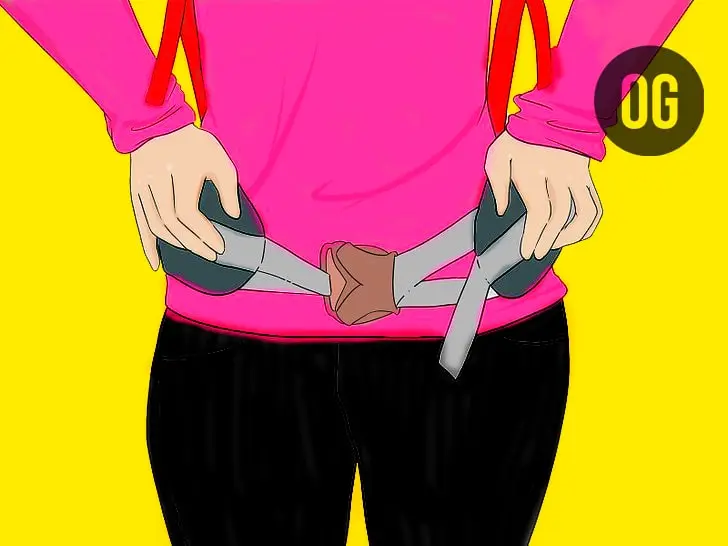
Tighten The Waist Belt
Fasten the waist belt by clipping it and adjusting it to sit atop your hips. Connect the buckle located between the bottom parts of the shoulder straps. Gently tug on the loose end of the strap until the belt fits snugly, providing support to your hips and abdomen without causing discomfort.
Ensure the waist belt aligns with the tops of your hip bones, known as the iliac crest. If it’s not in this position, make necessary adjustments to the belt and backpack.
Once properly positioned, the waist belt should bear the bulk of the backpack’s weight. This allows your legs’ stronger muscles and bones to carry most of the load.
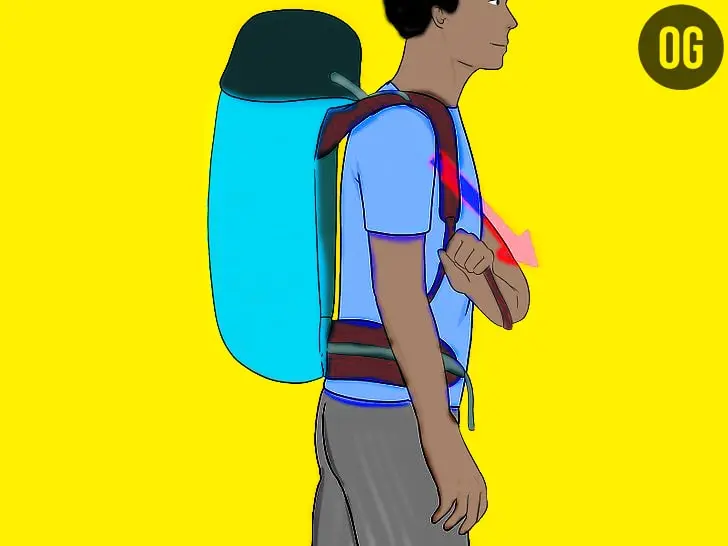
Tighten The Shoulder Straps And Load Lifters
- Adjust the shoulder straps and load lifters to stabilize the pack. Pull on the loose ends of the straps connected to the shoulder strap buckles positioned on the sides of your chest. Tighten until the backpack aligns with the curve of your spine, ensuring it’s snug but not uncomfortable.
- Use the straps for the “load lifters,” located above your collarbone, to bring the top of the pack nearer to your upper back. Tighten these straps just enough for a snug fit without causing discomfort, similar to adjusting the shoulder straps.
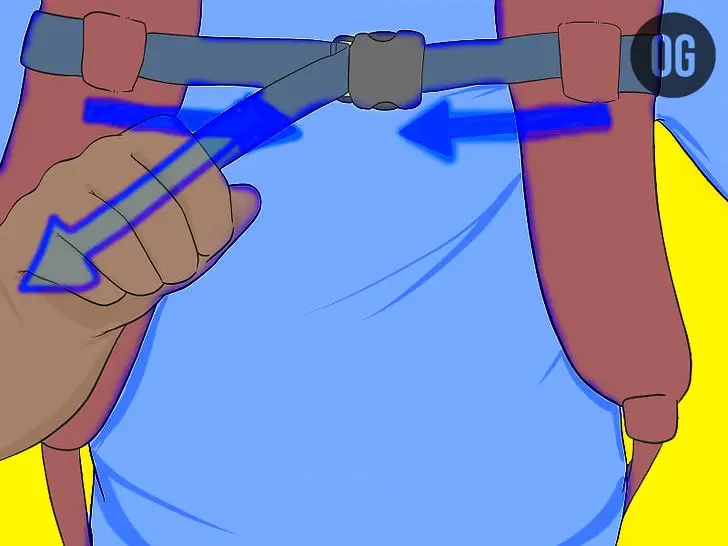
Tighten The Shoulder Straps And Load Lifters
- Adjust the shoulder straps and load lifters to stabilize the pack. Pull on the loose ends of the straps connected to the shoulder strap buckles positioned on the sides of your chest. Tighten until the backpack aligns with the curve of your spine, ensuring it’s snug but not uncomfortable.
- Use the straps for the “load lifters,” located above your collarbone, to bring the top of the pack nearer to your upper back. Tighten these straps just enough for a snug fit without causing discomfort, similar to adjusting the shoulder straps.

